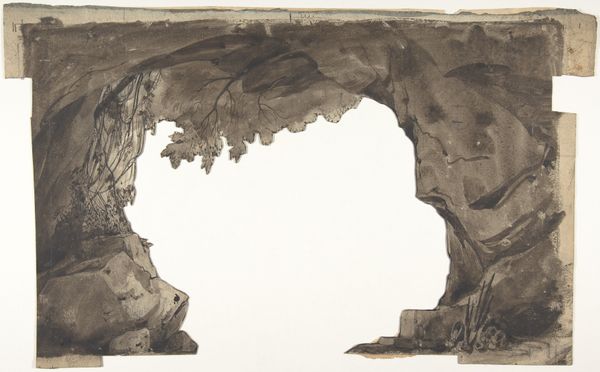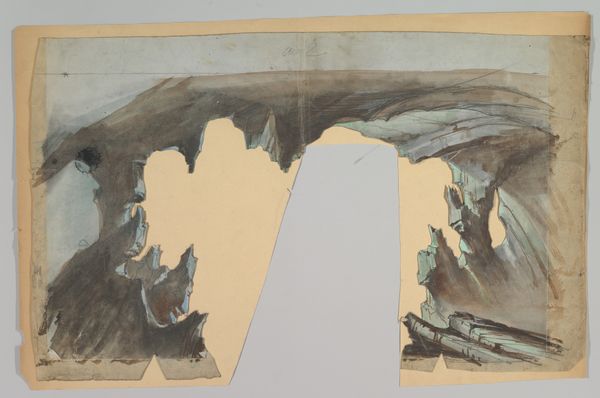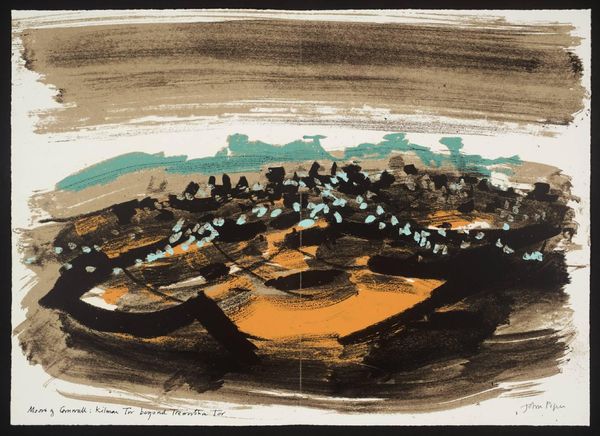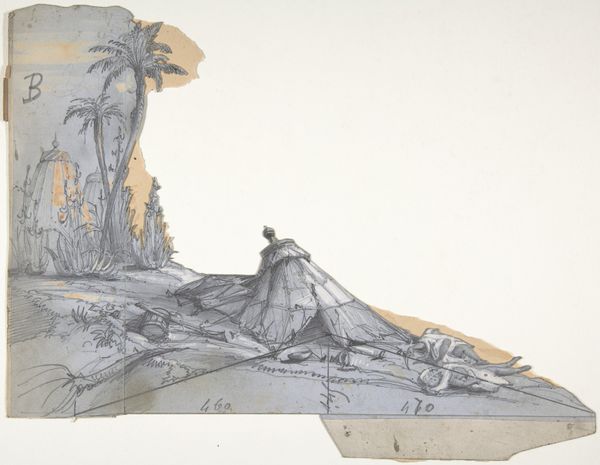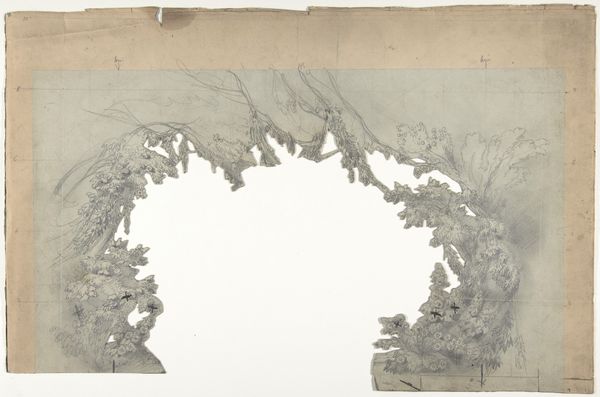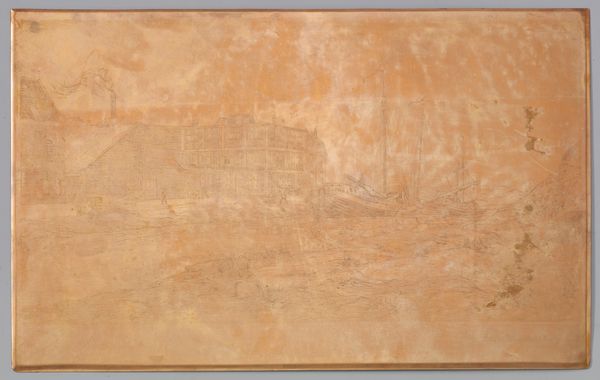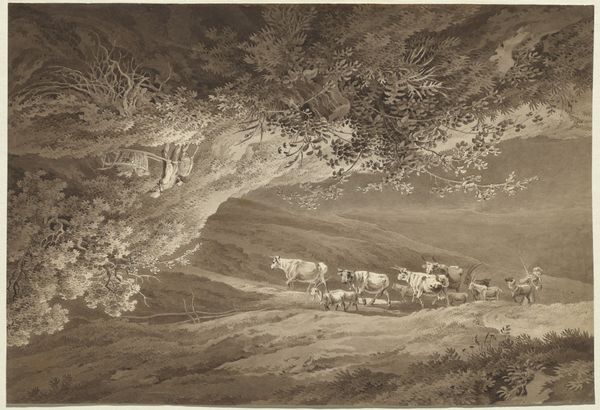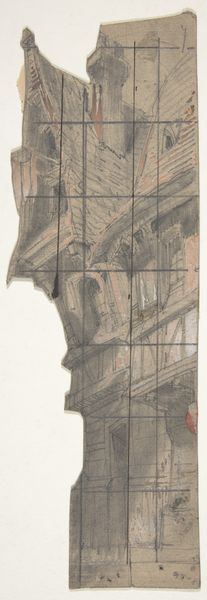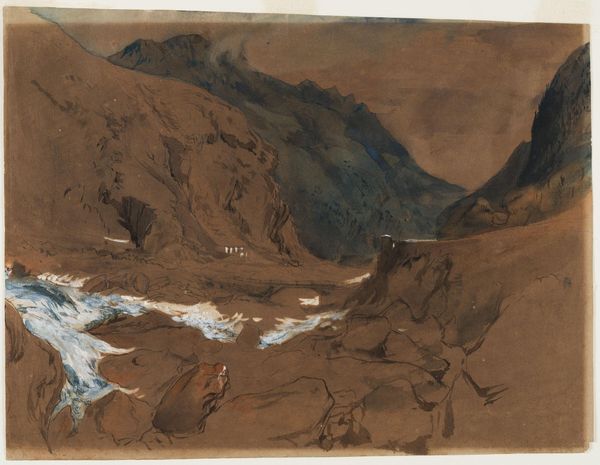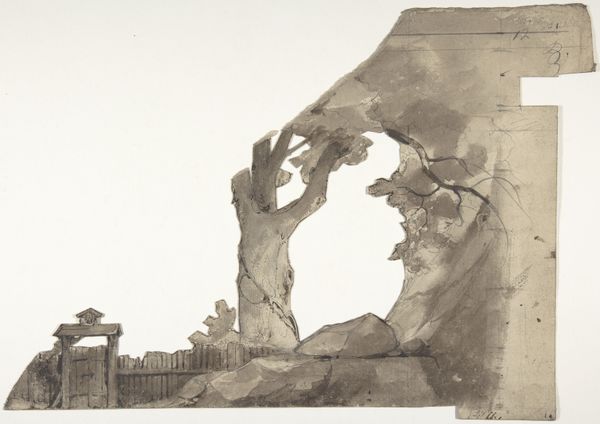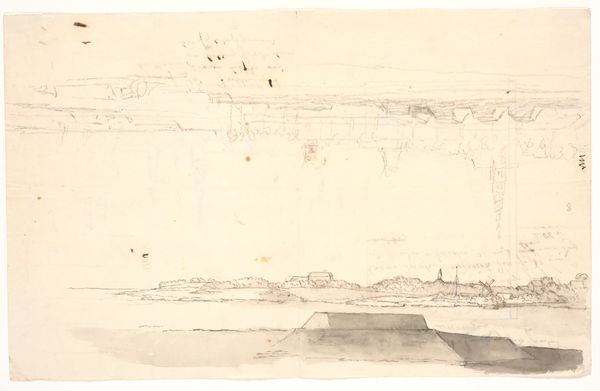
Copyright: Public Domain
Eugène Cicéri created this stage set design with watercolor, gouache, and graphite on paper in nineteenth-century France. In this period, French theater was a grand public spectacle, deeply entwined with the social and political climate. Cicéri's design reveals the era's fascination with the dramatic and the monumental. The craggy rocks and imposing architecture evoke a sense of awe and sublimity, popular themes in Romantic art. The design served as a crucial tool for shaping the audience's experience, setting the mood, and enhancing the narrative. It also reflects the hierarchical nature of theatrical production, with the designer's vision brought to life by a team of skilled artisans. To understand this artwork, one might explore archival materials such as playbills, theater reviews, and costume designs. These sources provide insights into the cultural values and artistic practices that shaped theatrical productions during this period. In doing so, we recognize that stage design is not merely decorative, but rather a powerful form of social and cultural expression.
Comments
No comments
Be the first to comment and join the conversation on the ultimate creative platform.
